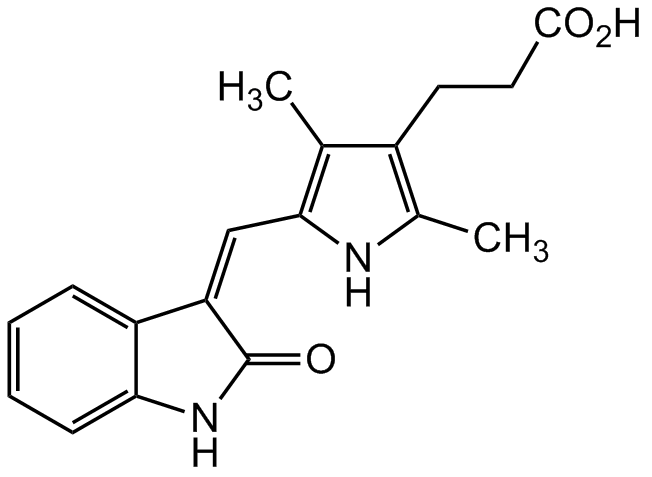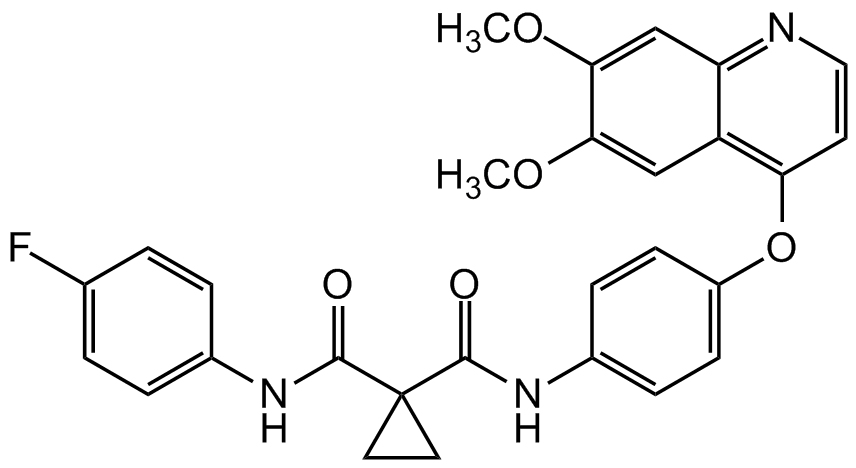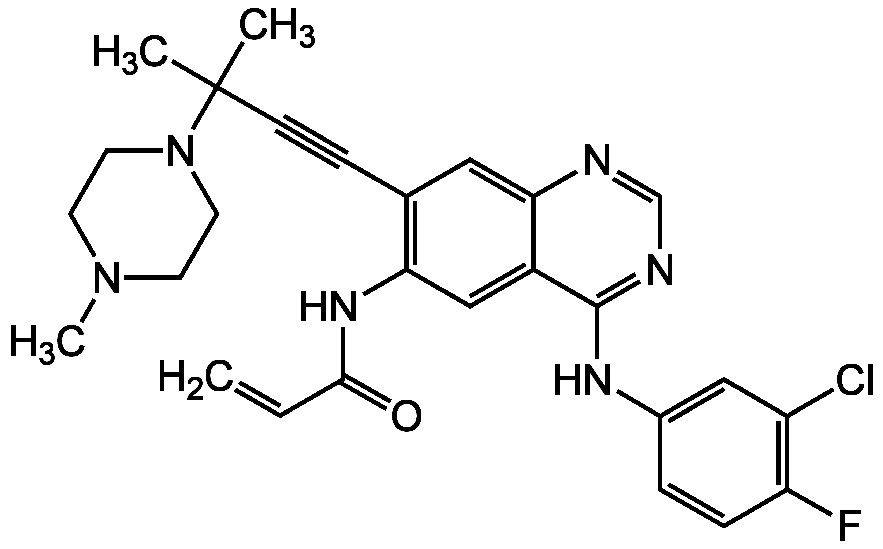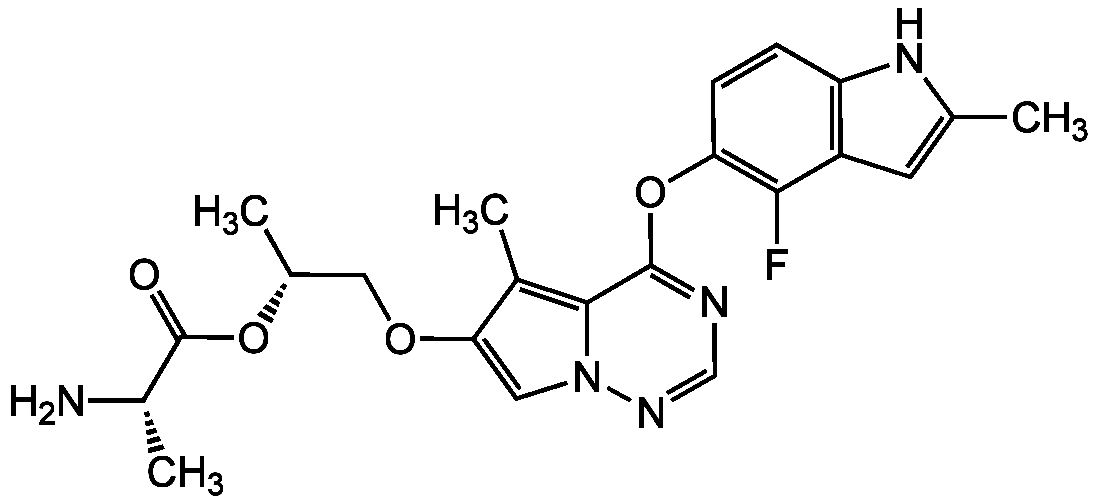
Chemical Structure
Orantinib
CDX-O0202
CAS Number252916-29-3
Product group Chemicals
Estimated Purity>98%
Molecular Weight310.35
Overview
- SupplierChemodex
- Product NameOrantinib
- Delivery Days Customer10
- CAS Number252916-29-3
- CertificationResearch Use Only
- Estimated Purity>98%
- Molecular FormulaC18H18N2O3
- Molecular Weight310.35
- Scientific DescriptionChemical. CAS: 252916-29-3. Formula: C18H18N2O3. MW: 310.35. Orantinib is an orally bioavailable receptor tyrosine kinase inhibitor. Orantinib binds to and inhibits the autophosphorylation of vascular endothelial growth factor receptor 2 (VEGFR2), platelet-derived growth factor receptor (PDGFR), and fibroblast growth factor receptor (FGFR), thereby inhibiting angiogenesis and cell proliferation. It is a potent ATP-competitive inhibitor of PDGFRbeta, VEGFR2, and FGFR1 (IC50 = 0.06, 2.4, and 3.0 microM, respectively) but not EGFR (IC50 >100 microM). Orantinib suppresses tumor growth, blocks angiogenesis in tumors and induces apoptosis of tumor vasculature and regression of established tumors. Orantinib inhibits the phosphorylation of the stem cell factor receptor tyrosine kinase c-kit, often expressed in acute myelogenous leukemia cells, inhibits Aurora kinases B and C (IC50=35 and 210nM, respectively), and inhibits Unc-51-like serine/threonine kinase Ulk3, involved in hedgehog signaling. All together ornatinib exhibits antiangiogenic, anti-inflammatory, antimetastatic and proapoptotic activity. - Orantinib is an orally bioavailable receptor tyrosine kinase inhibitor. Orantinib binds to and inhibits the autophosphorylation of vascular endothelial growth factor receptor 2 (VEGFR2), platelet-derived growth factor receptor (PDGFR), and fibroblast growth factor receptor (FGFR), thereby inhibiting angiogenesis and cell proliferation. It is a potent ATP-competitive inhibitor of PDGFRbeta, VEGFR2, and FGFR1 (IC50 = 0.06, 2.4, and 3.0 microM, respectively) but not EGFR (IC50 >100 microM). Orantinib suppresses tumor growth, blocks angiogenesis in tumors and induces apoptosis of tumor vasculature and regression of established tumors. Orantinib inhibits the phosphorylation of the stem cell factor receptor tyrosine kinase c-kit, often expressed in acute myelogenous leukemia cells, inhibits Aurora kinases B and C (IC50=35 and 210nM, respectively), and inhibits Unc-51-like serine/threonine kinase Ulk3, involved in hedgehog signaling. All together ornatinib exhibits antiangiogenic, anti-inflammatory, antimetastatic and proapoptotic activity.
- SMILESO=C1NC2=CC=CC=C2/C1=C/C3=C(C)C(CCC(O)=O)=C(C)N3
- Storage Instruction-20°C
- UNSPSC12352200



![Orantinib [252916-29-3]](https://www.targetmol.com/group3/M00/37/EB/CgoaEWayU-CEOavSAAAAAJAND04052.png)



